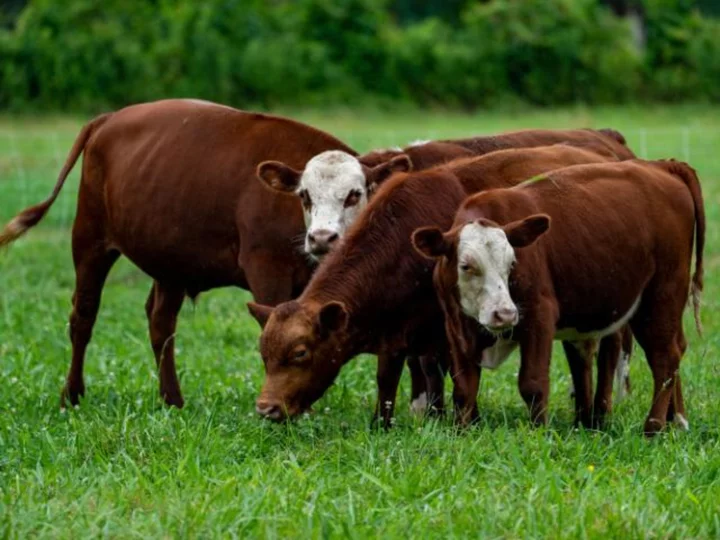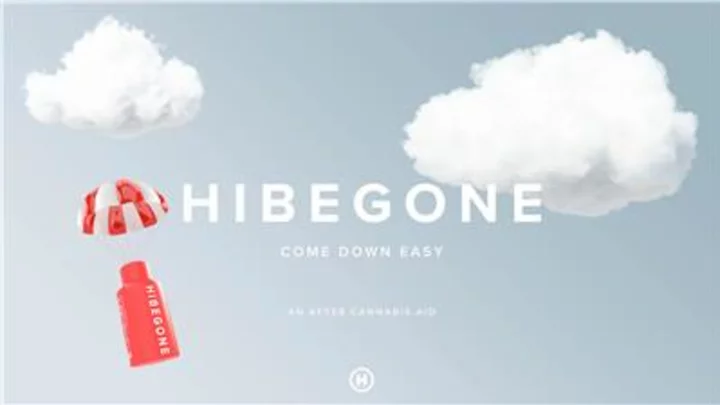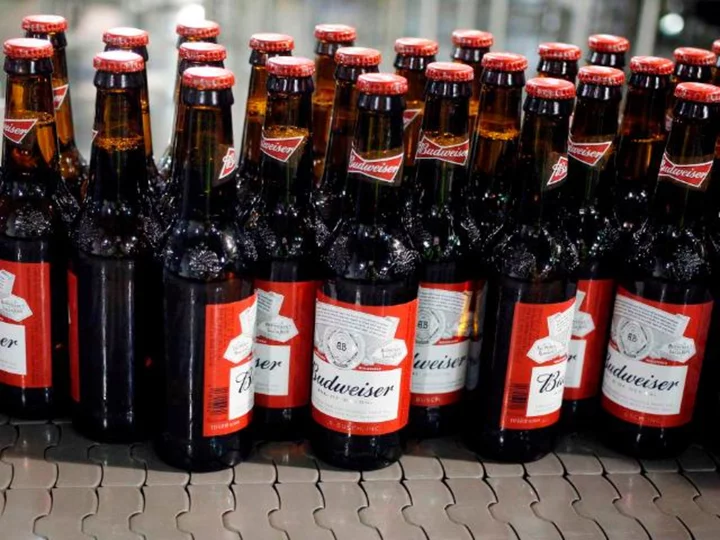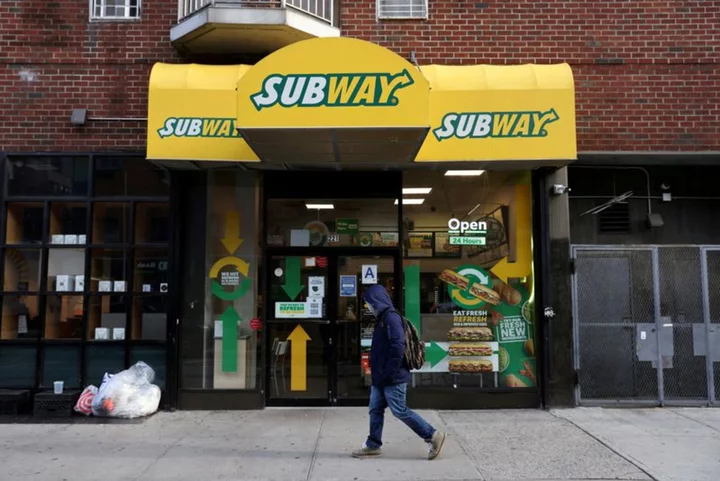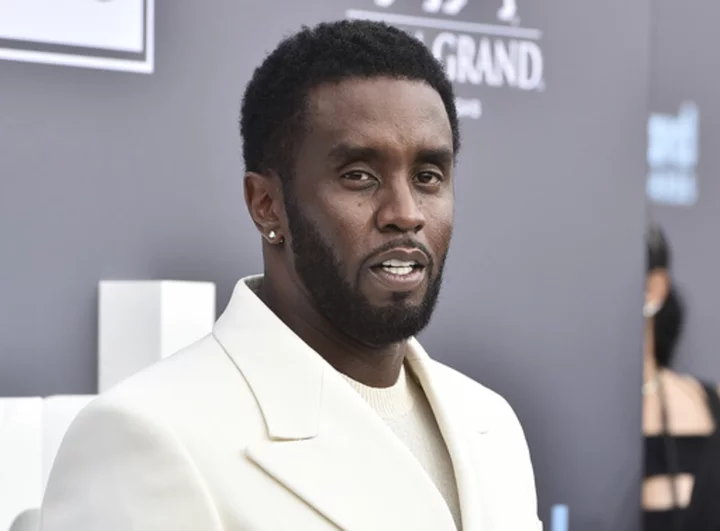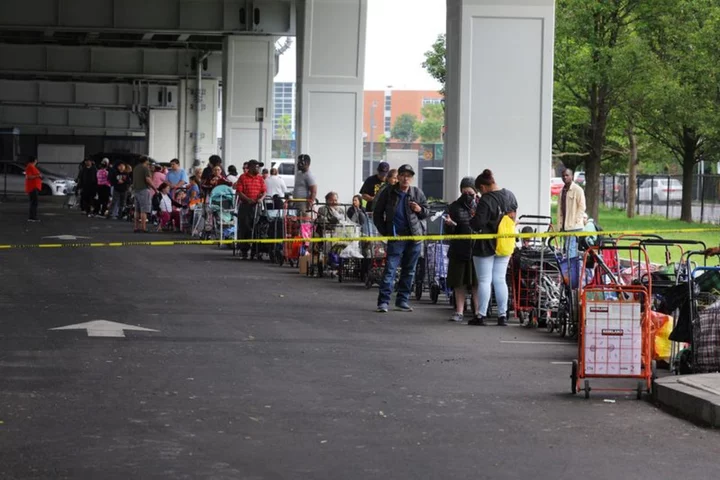In a world suddenly brimming with potential solutions for the climate crisis, it sounds like clickbait: How this one weird cow trick can improve soil, water, wildlife, and farmer wealth while pulling tons of planet-cooking carbon from the sky.
With methane burping out of their 4 billion stomachs -- and the 12 million acres of forests cleared around the world each year to feed them -- it is estimated if the world's 1 billion cows were a country, they'd be third behind China and the US on the list of climate-changing polluters.
But Arizona State University professor and filmmaker Peter Byck believes by simply changing the way they are grazed, cattle can be useful allies in Earth repair.
"I anticipate we'll get a lot of pushback," he said while strolling an idyllic organic farm in Tennessee. "Because people are not thinking that cows can be a part of the solution."
He calls the trick "Adaptive Multi-Paddock" or "AMP" grazing, but it is just a new branding for an ancient relationship between animal and land. Also known as "mob grazing" in the UK, the technique feeds cattle in a way to mimic how millions of wild buffalo, elk and deer munched wild forage across North America and, with only their poop and hooves, built a layer of rich, fertile soil across the Great Plains up to 15 feet deep.
Instead of the common practice of letting cows graze for months in one big field, AMP farmers use a single line of electric fence to pack their herd into smaller areas to maximize manure distribution, and then move them to the next patch of high grass in a day or two.
"The animals hit an area really hard and then they leave it for a long time," Byck explained. "The trick is to eat half of the forage like we eat the tips of asparagus, stomp down the rest and cover the soil so it stays moist and the microbes thrive."
Experiments on neighboring farms
It is not how the vast majority of America's roughly 100 million cows are fed. And after generations of fertilizer and pesticide use, tilling and overgrazing, millions of acres of naturally rich soil have become lifeless dirt, devoid of the microbes and insects that create a healthy system, and unable to draw down carbon and lock it underground.
Byck first discovered the carbon-gobbling power of healthy soils while making the documentary "Carbon Nation," and in 2014, he assembled a team of scientists in to launch a first-of-its-kind study of five pairs of neighboring farms across the Southeast.
On one side of the experiment, conventional farmers who fertilize grass with expensive nitrogen and cut it for hay, while across the fence or just down the road, he found AMP grazers who never mow or fertilize.
From 2018 to 2022, the team measured everything from microbe health and bird life to rainwater infiltration, insect diversity and farm expenses. To pay for the study, Byck applied for grants and knocked on the doors of Exxon and Shell, which paid for some of the methane measuring equipment, and McDonald's, which kicked in a $4.5 million matching grant. "I wanted to go to big companies because if they don't change, we don't get there," Byck said.
After filming it all, the result is the four-part docuseries titled "Roots So Deep You Can See the Devil Down There," a title provided by conventional Mississippi cattleman Prentiss Ferguson as he learned his AMP grazing neighbor had him beat on every measure.
While the science is still ongoing and the results have yet to be published and peer-reviewed, Byck says he has early data which shows the AMP farms pulled down up to four times as much carbon as the conventional grazers next door and their cows burped up to 10% less methane.
Soil touched more by hooves than tilling machines held 25% more microbes, 33% more insect diversity and three times the number of grassland birds. With spongier ground, AMP farms absorbed over twice as much rain per hour.
And even though the conventional grazers were spending small fortunes on fertilizer, nitrogen levels were higher on the farms where animals did their own manure spreading.
"You don't even fertilize when you plant your rye grass?" Margo Ferguson asks her neighbors Cooper and Katie Hurst, eyes narrowed with incredulity in the "Roots So Deep" film.
"It sounds crazy," Cooper replies from a rocking chair across the porch. "But it's just letting mother nature do the work."
Much of the series wonders if the science and respectful conversation is enough to win the hearts and minds of farmers and ranchers stuck in their ways, so the most poignant moments come when longtime neighbors cross the fence for the first time.
"Would it be an interesting thing if you didn't have to pay for fertilizer?" Byck asks the 87-year-old Ferguson, whose farm has been run the same way for generations.
"Wouldn't that be wonderful?" Ferguson smiles.
Arguing for cattle as part of a climate solution
"Cows are the most destructive industry on Earth," Pat Brown, the founder and CEO of Impossible Foods told CNN in 2020. It was the start of a meat replacement boom and his new twist on the veggie burger was so convincing, Impossible Burgers went from one restaurant to over 30,000 in a relative blink. "Cows are not getting any better at what they're doing," he said. "They're not even trying. So, it's game over. They just don't know it yet."
But while Byck agrees with the scale of Earth's cow problem, he breaks with Brown and others who believe a vegan diet is the most environmentally friendly.
"I used to think we have to get people to stop eating meat," he said. "But then I walked onto these farms and talked to these farmers. Animals in grasslands are how nature has built soil for hundreds of thousands of years and if you put the five biggest crops grown in America on a scale and put cattle on the other side, the crops create five times as much carbon emissions because of the way they are farmed. If you're worried about climate change, it's plows, not cows."
He said one of his test groups showed an AMP grazer can run three times as many cows on the same sized land. "Then we don't have to cut down rainforests," he said. "We don't have to feed the cattle soy. They can eat grass, which is how their physiological bodies are built and evolved."
Byck hopes revived pastures become the cheaper alternative to feedlots and since the AMP method eliminates the need for the $200 billion fertilizer industry, he anticipates pushback from Big Ag interests as well as environmentalists who see the McDonald's funding as a red flag of greenwashing.
"I hate the fact that we have to take that money," science team member Jonathan Lundgren tells Byck in "Roots So Deep" as they agonize over the funding needed to finish the science. After 11 years at the US Department of Agriculture, the Ph.D. agroecologist left in frustration when he saw corporate pressure influencing the kind of research he was allowed to pursue, including the benefits of AMP grazing.
"All they've got to do is fund the opposite," he warns Byck of McDonald's potential ability to stop them from publishing the new data. "I mean there's no shortage of scientists that are dying to say that conventional agriculture is the only way and that anybody who's saying anything different is foolish."
McDonald's told CNN wide research was important. "Implementing proven regenerative agricultural practices is one of the many steps McDonald's is taking to reduce emissions and ensure resiliency in our supply chain," the company said in a statement. "Research across varied and diverse ecosystems is critical to identify scalable solutions in this field. That's why McDonald's has funded research across the world that explores the impact of grazing practices on carbon sequestration, along with broader environmental effects on climate, nature and farmer resiliency. McDonald's looks forward to the findings from this study and assessing them in concert with the broader research that is helping advance our collective understanding of grazing's impact across critical ecosystems and geographies."
"What do they do with this data? I don't know," Byck said of his corporate funders. "I will continue to work with any company that wants to learn about soil health. Because if McDonald's -- which feeds 1% of the world every day -- doesn't do this, it's going to be a lot harder to get done. That's our thinking," he paused, "And we could be crazy."
In the meantime, Byck is screening "Roots So Deep" on a farmland road show, hoping a streaming service will show it far and wide and help him win more converts like Prentiss Ferguson.
The Mississippi farmer and his wife open the series by questioning whether man-made climate change is real but now the family is so committed to AMP grazing they have agreed to let the scientists leave up the carbon dioxide towers and chart the results for the next nine years as they set out to keep up with their neighbor's soil.
The most famous test pair in "Roots So Deep" are cousins and founding members of the legendary country band Alabama -- Randy Owen, a conventional grazer, and Teddy Gentry, a longtime practitioner of AMP. "If the cow's getting what it wants and the farmer's getting what he wants and the grass is getting what it needs," Gentry smiles after learning the results of the research, "Everybody's pretty happy."
But beyond the data, it's the conversational breaking of common ground that matters just as much to Curtis Spangler, one of the conventional grazers in Tennessee. "Farmers really stay apart from each other and when it comes to the AMP guys it was like 'They're idiots, they're doing their own thing,'" Spangler told CNN as he described his new plans to switch to AMP and hopefully quit his second, off-farm job.
"When we first started, we all we felt like it was more of a us versus them," Spangler said. "But the more we worked with (Byck), we realized that he was trying to help. So it worked out really well."

